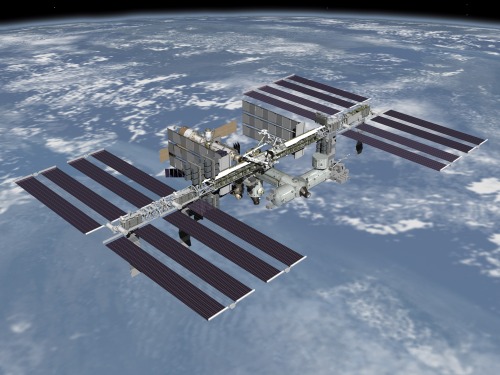NASA OIG Report Generally Praises ISS Research Outreach
Earlier this week, the NASA Office of Inspector General released a report, found here, titled NASA’s Efforts to Maximize Research on the International Space Station. The report itself , like most NASA OIG reports is very well written and provides excellent background information on the subject. For anyone interested in the approach to science being performed aboard ISS it is worth a read.
The overall takeaway is that “NASA has made progress towards maximizing the research capabilities of the ISS, but opportunities exist for greater utilization to more fully realize the Station’s research potential and maximize the value of the United States’ investment in building and maintaining the structure.”
NASA uses several metrics to measure the station’s research performance, and one of the simplest, average crew time spent on science per week is encouraging, with the astronauts regularly exceeding the goal of 35 hours. Also positive, the utilization rate for allocated space is set to increase from 70-75% for internal experiments, and 27-40% for external sites during the current year. With 100% utilization being both impractical and likely unachievable, the internal rate in particular is pretty good.
One item which is extremely frustrating however is the limitation on total research performed by having a crew of 6, rather than 7, a direct consequence of the U.S. lack of crew transportation capabilities.
From the report, “According to the ISS Program Office, a seventh crew member could potentially add about 33 hours per week to the current amount of crew time devoted to research – a 94 percent increase.”
Given the fact that after $60 billion in construction costs, another $40 billion in Shuttle expense which NASA counts separately, and an ongoing budget of roughly $3 billion per year on the station program, ostensibly for the purpose of conducting scientific research, it is rather unfortunate that for lack of a crew capacity which now looks as if it won’t be available until 2017, the taxpayer has been shorted such a high percentage of the potential payoff.
And yet, judging by reports from the FY 2014 House Commerce, Justice and Science subcommittee appropriations meeting yesterday, the only thing Congress care about, besides congratulating themselves, is either praising the amounts allocated to SLS/Orion, or if you happen to represent Alabama, complaining that it still isn’t enough.
About the only taxpayers who shouldn’t complain are those in Russia, who as the OIG report indicates, have been getting a pretty good deal since the U.S. started buying Soyuz seats in volume.
Again, from the report: “Between 2006 and 2008, NASA purchased one seat per year. Beginning in 2009, NASA started purchasing six seats per year. The price per seat has increased over the years from $22 million in 2006, to $25 million in 2010, to $28 million in the first half of 2011. During the second half of 2011, the price per seat jumped to $43 million.
The price has continued to increase. For example, the price of purchased seats for launches in 2014 and 2015 are $55.6 million and $60 million, respectively. In April 2013, NASA signed another deal with Russia valued at $424 million for six additional seats to carry NASA astronauts to the Station during 2016 through June 2017, and the price per seat has increased to $71 million.”


